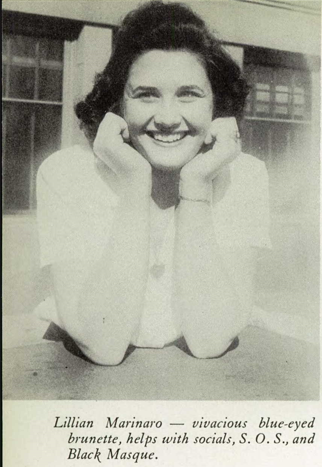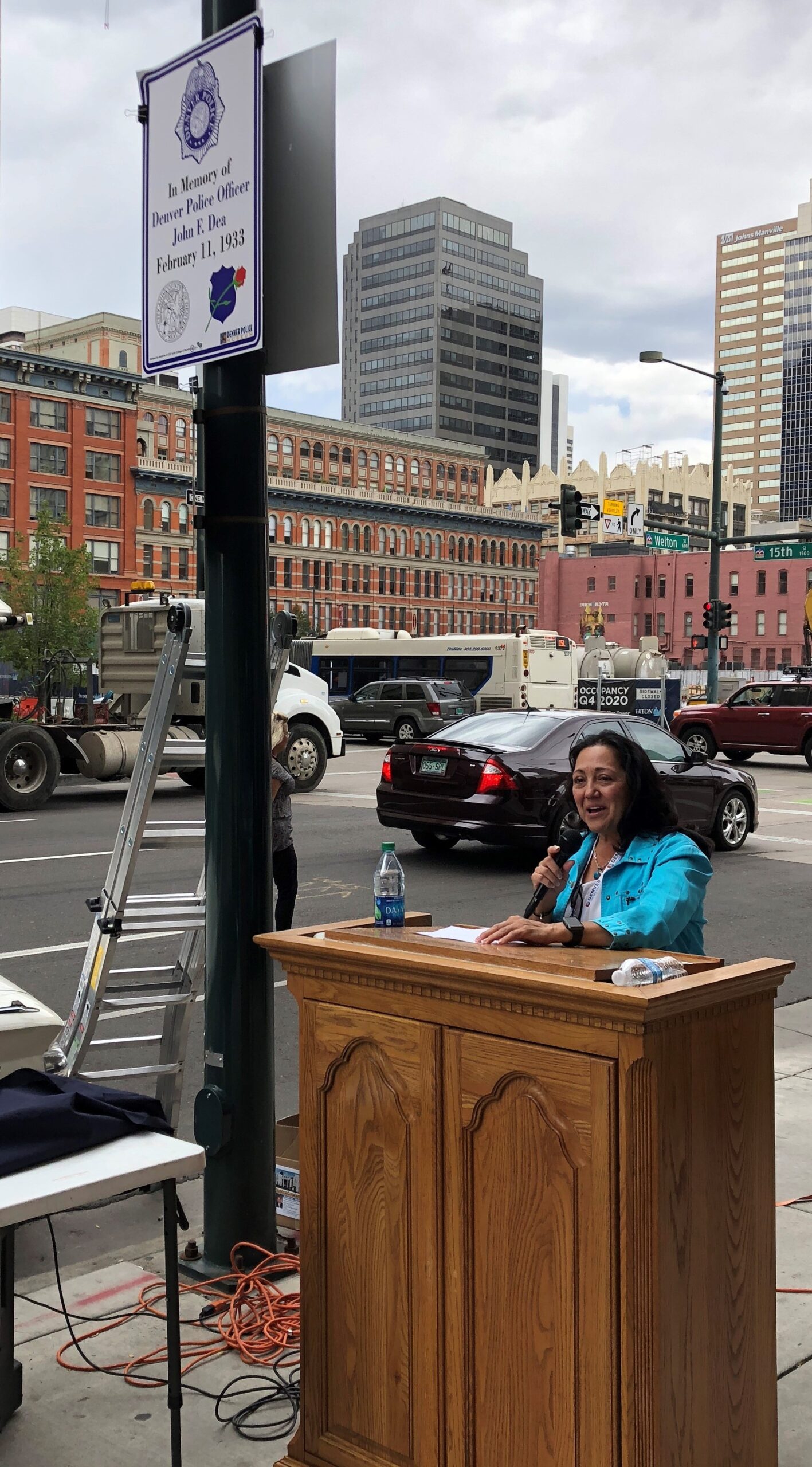A key purpose of UpDoNA is to promote a sense of community. As a volunteer for the Denver Police Museum and Denver Police Department, my role is to find surviving relatives of fallen Police Officers. In the 162-year history of the Department, seventy-seven Officers have died in the line of duty and there is an ongoing program to honor each of these Officers who made the ultimate sacrifice while protecting our city.
You may have noticed signs fastened to light poles throughout Denver, including several in UpDoNA. These signs identify where fallen Officers were killed while responding to calls. Ceremonies to honor each fallen Officer are organized by the DPM and this includes a narrative of the police report describing the incident. Attendees include current and former Denver Policemen (including Chief Paul Pazen and Deputy Chief Barbara Archer, among others), City Councilors (Debbie Ortega is often present), other dignitaries, family, friends, and volunteers.
It is very meaningful when surviving relatives of fallen Officers are present. Finding these relatives is my role and it is a process of “reverse genealogy.” Rather than going back in time to search for ancestors, you start with the ancestor and come forward. Birth, marriage, and death records are important documents as well as census records, military draft registration cards, cemetery records, etc. As the search gets closer to the present, fewer documents are available. This process is very time-consuming and internet tools such as Ancestry.com and Newspapers.com are immensely helpful. A response that makes the effort worthwhile is when a descendant initiates contact and says something like “Hi, my name is —– and my grandfather was a Denver Police Officer. I would love any information you have regarding him.” Once this happens, the individual and his or her family become part of a ‘sub-community’ within our city.
In 2018, my first effort was to search for surviving relatives of Pasquale Marinaro, a Detective who died in 1936. After about two weeks, I was able to identify, then locate, his 94-year-old daughter Lillian who resides in the Denver Metro area. She was then contacted by Mike Hesse, President of the DPM, who invited her to the ceremony honoring her father. Lillian was twelve years old when her father was killed. When the police report was read, Lillian learned for the first time the circumstances surrounding his death.
This has been a remarkable journey and has led to new avenues. Recently, the DPM asked me to find surviving relatives of the DPD’s first two African American Detectives, Ulysses and Carl Baker. They were brothers who joined the force in 1896 and who were promoted to Detectives in 1911. Ulysses and Carl formed one of the first, if not the first, auto vehicle theft investigative unit in the US. In February 2023, Ulysses and Carl will be honored during African American History Month in the presence of his newly found descendants.
There are many ways to do volunteer work in the City of Denver. Sometimes you seek a way to help, sometimes a need finds someone who can help. For me it was the latter through my interest in genealogy.


Detective Pasquale Marinaro (1892-1936) and his daughter Lillian (b. 1924). The 1941 Denver North High School photograph on the right was key to finding Lillian in 2018 when she was 94 years old.

Lillian with members of her family during a 2018 honor ceremony.




In 1933 Detectives Schneider and Dea were killed while attempting to question a man who was trying to sell stolen tools. The location of the incident is in UpDoNA at 15th and Welton, now occupied by Homewood Suites.
Det. Schneider’s great-nephew works for the City and County of Denver and his office is located at the Denver Post building adjacent to Civic Center. This is only four blocks from where Schneider and Dea were killed.



